Apple silicon ranked: How does the new Apple M2 stack up against the M1 line?
How do the various Apple M-series chips stack up against one another?
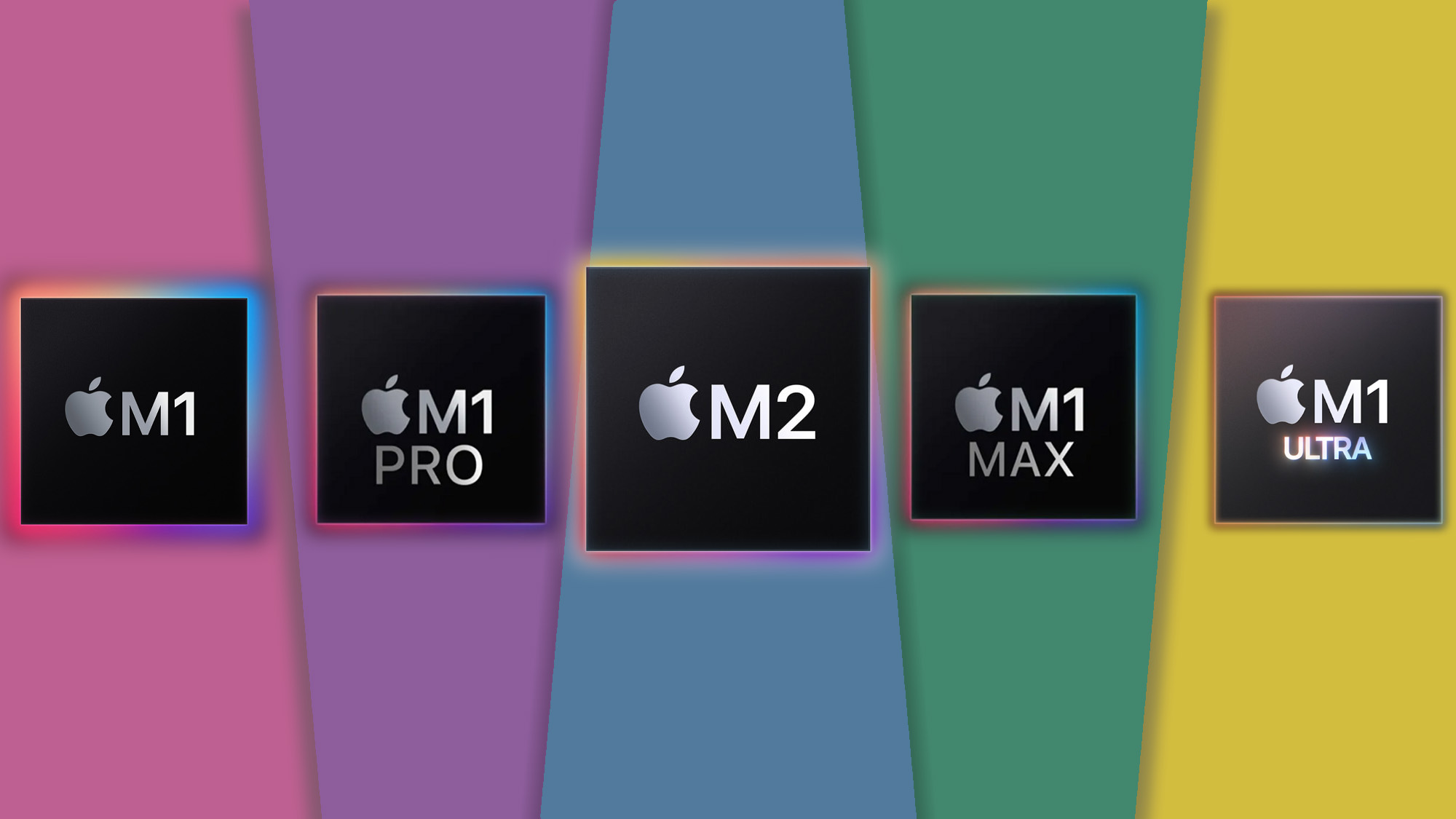
With the release of the new MacBook Pro 13-inch with Apple M2, everyone wants to know how the new Apple silicon stacks up against its predecessors, from the M1 to the M1 Ultra.
So far, we only know of two products that will feature the new Apple M2: the Apple MacBook Pro 13-inch (M2) and the Apple MacBook Air (M2), though it’s likely that the M2 will be in the Apple Mac Mini (2022) as well as a new Apple iMac (24-inch, M2).
So naturally, we want to see the Apple M1 vs M2 matchup, but given the new MacBook Pro might be tempting for some users, we also want to see how things match stack up against the M1 Pro and M1 Max, and whether it’s worth opting for one of those MacBook Pro models or if you ought to go with the Apple MacBook Pro 13-inch with M2 now that it is available.
And, while we’re here, how do the M1 Max and M1 Ultra stack up against each other for creative desktop applications in the Mac Studio? Well, we’ve run a bunch of numbers over the last few months on the best MacBook and Macs, and now we’re putting all of Apple’s latest chips into the arena to see how they all stack up for various workloads, from general performance to battery life to gaming, to help you figure out which Apple chip is the one you need to power your next Mac.
Apple silicon ranked: General performance

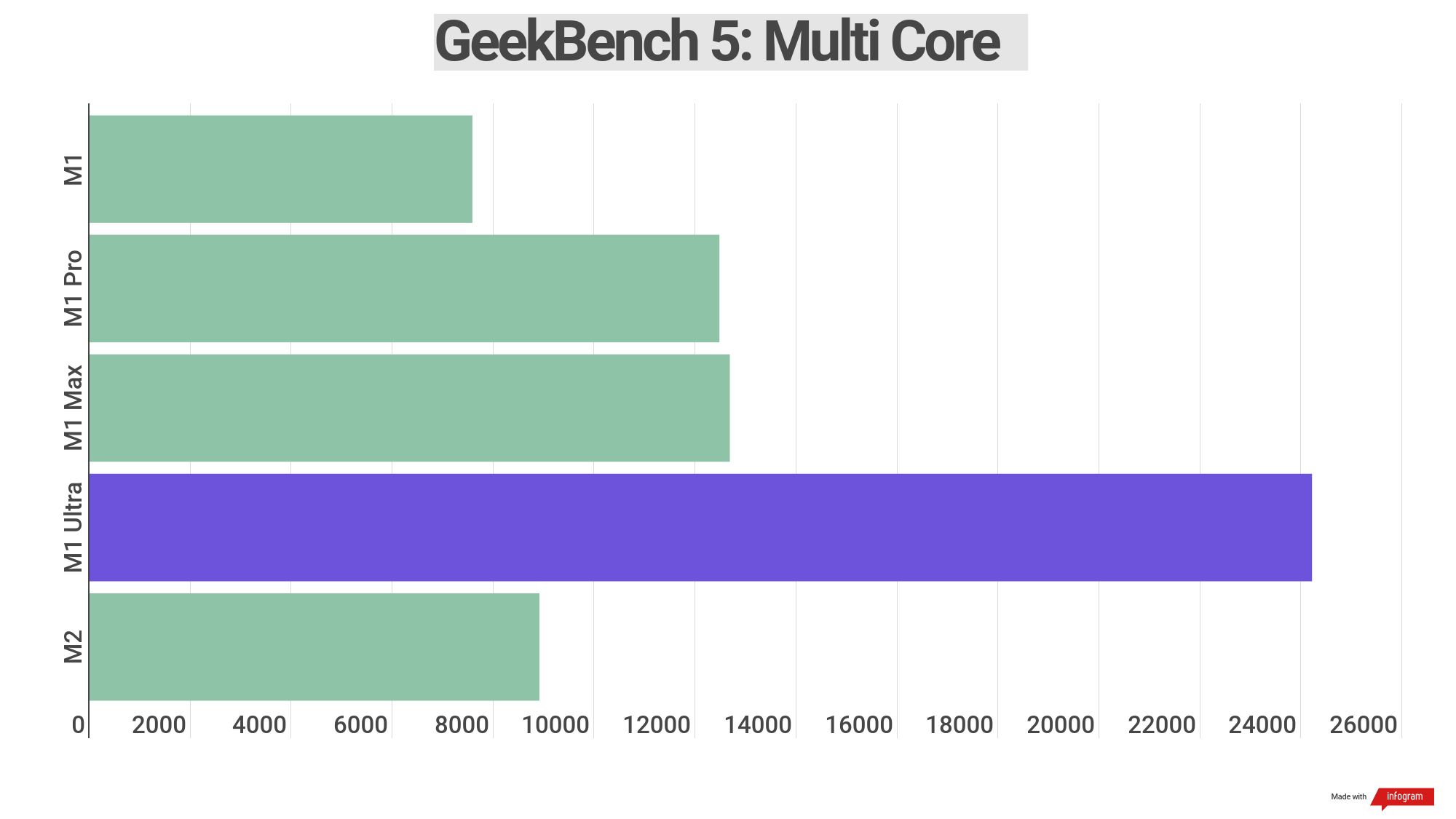

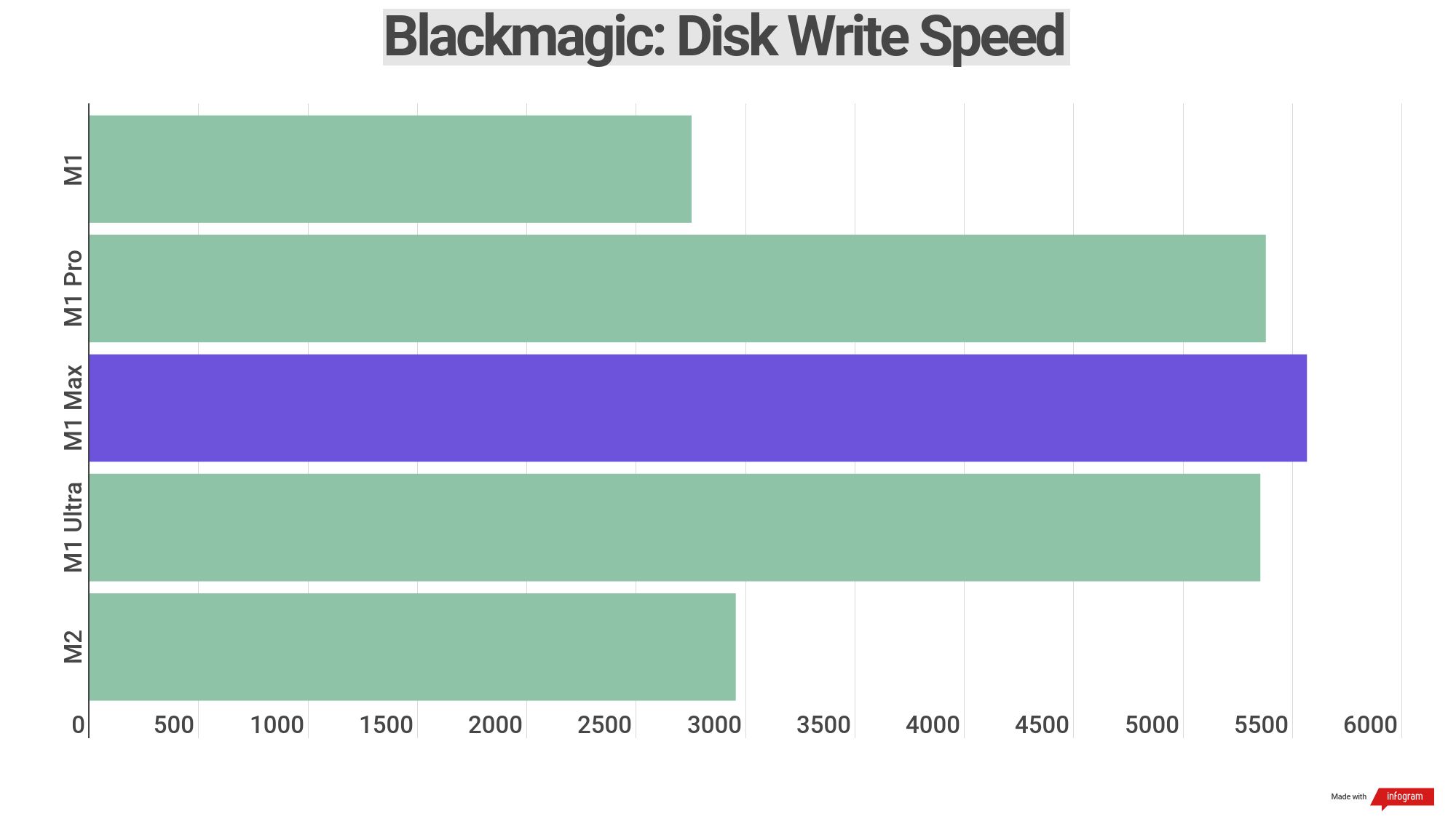
There are a few things to note about the Apple M2, but first, out the gate is its single-core performance. A few weeks ago, we saw the first benchmarks pop up online showing that the M2’s Single-Core performance is comparable to the Intel Alder Lake i9-12900K, which is arguably the best processor in the desktop market.
Now that we’ve done our own tests, we can confirm that this is absolutely the case. On average, the Apple M2 Geekbench 5 Single-Core score comes in around 1,932, which beats every other M-series chip as well as every other consumer processor except for the Intel Core i9-12900K and i9-12900HK, which is a variant of the K-series. The Apple M1 chip, for reference, scored an average of 1,733 on Geekbench 5.
This is an incredible result and says a lot about the potential for Apple Silicon. The M2’s Multi-Core performance is much lower than the Intel Alder Lake chips (as well as the Pro, Max, and Ultra M1 variants), but with only 4 performance cores, this isn’t unexpected. In this regard, it outperforms the Apple M1 Multi-Core score by a decent amount. The Apple M1 chip scores 7,584 in Multi-Core performance, while the M2 chip scores 8,722 in the same test.
Sign up for breaking news, reviews, opinion, top tech deals, and more.
Apple silicon ranked: Creative workloads
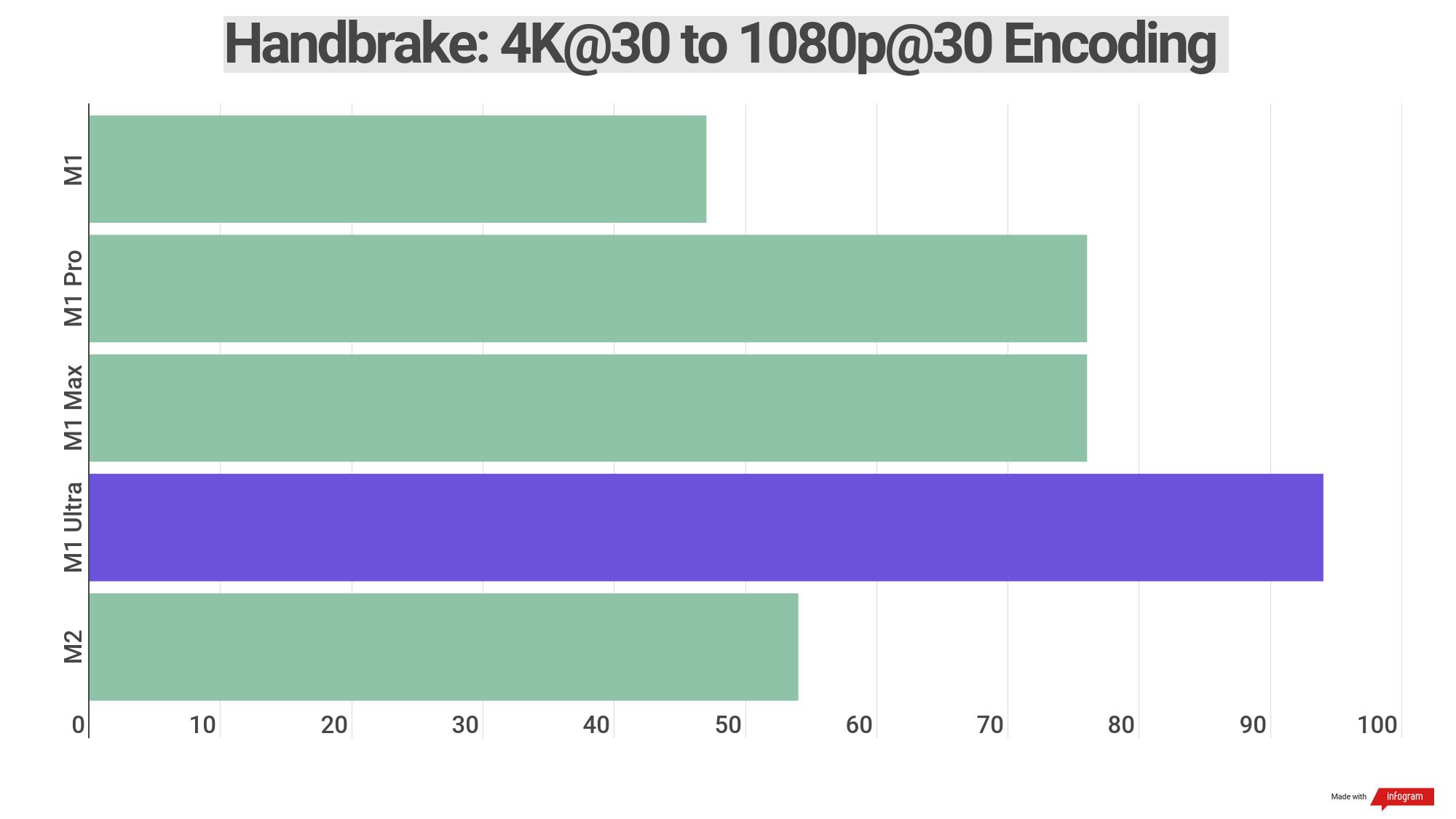
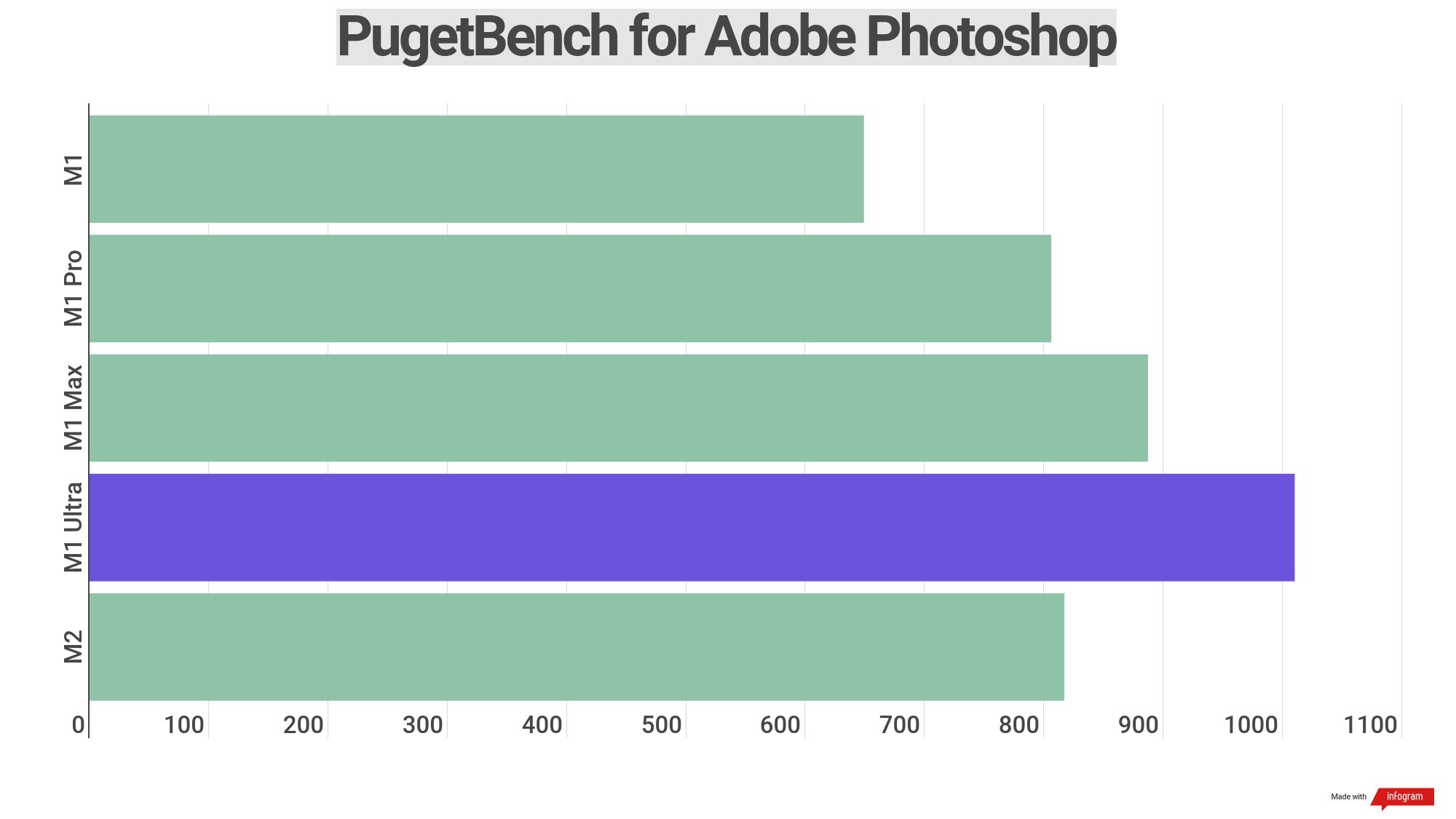
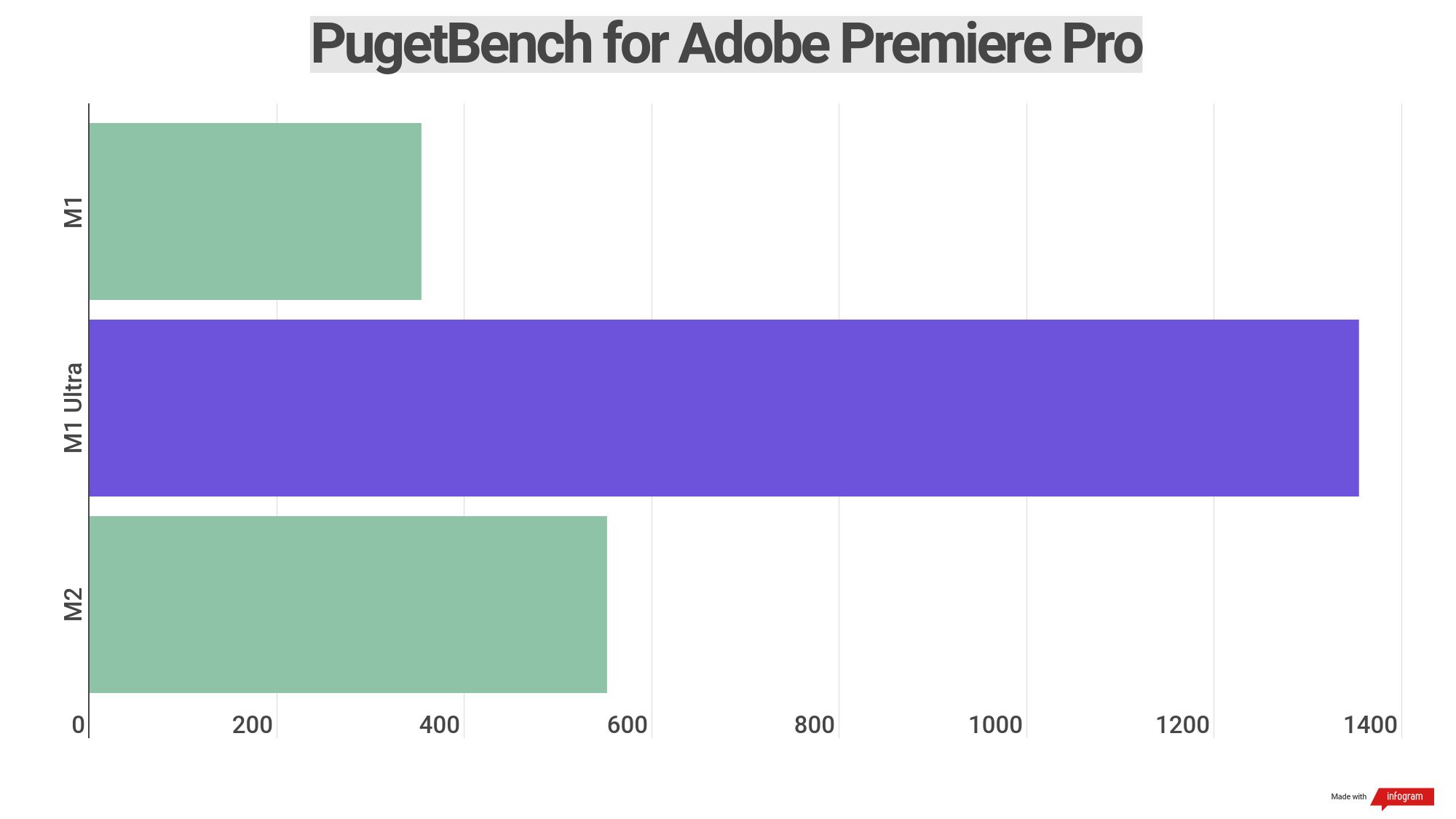
Well, what about creative performance? This is the Apple M-series bread and butter, after all, so this is what a lot of people are going to want to look at. Creative workloads are what make MacBooks some of the best laptops around, so how the M-series chips handle various tasks is an important matter.
In terms of creative benchmarks, it’s no surprise that the M1 Ultra packed into the Mac Studio is the absolute winner here. In Handbrake, the M1 Ultra encoded Tears of Steel at 4K@30 into 1080p@30 at about 94 frames per second (fps), while the next closest, the M1 Max and M1 Pro, were able to encode that same video at 76 fps.
The M2 chip did an admirable job, encoding the same video at 54 fps, while the M1 chip encoded it at 47 fps. In terms of Apple-to-Apple comparisons, this is about 15% faster than its M1 predecessor, which is a solid gen-on-gen improvement. This is also about 57% of the speed of the M1 Ultra, which is not bad at all for a mobile workstation.
When it comes to PugetBench for Adobe Photoshop and PugetBench for Adobe Premiere Pro, it’s a similar result with the M1 Ultra coming out way ahead of the pack, which is expected. It scored 1,010 in PugetBench for Adobe Photoshop and 1,354 for PugetBench for Adobe Premiere Pro.
The Apple M2 meanwhile, scored 817 and 552, respectively, on the same tests. This means the Apple M1 Ultra is about 65% faster than the M2, but again, this is an expected result given that the M1 Ultra is a desktop-class processor, while the M2 is a hybrid desktop/mobile processor.
Compared to the M1, which scores a 354 on PugetBench’s Adobe Premiere Pro benchmark, The M2 comes out about 56% better than the M1, and on the Photoshop benchmark, it comes out about 26% higher than the M1. Notably, it also beats the M1 Pro in Photoshop, which scores an 806, though it falls slightly behind the M1 Max which scores an 887 in the same Photoshop benchmark.
Apple silicon ranked: Gaming
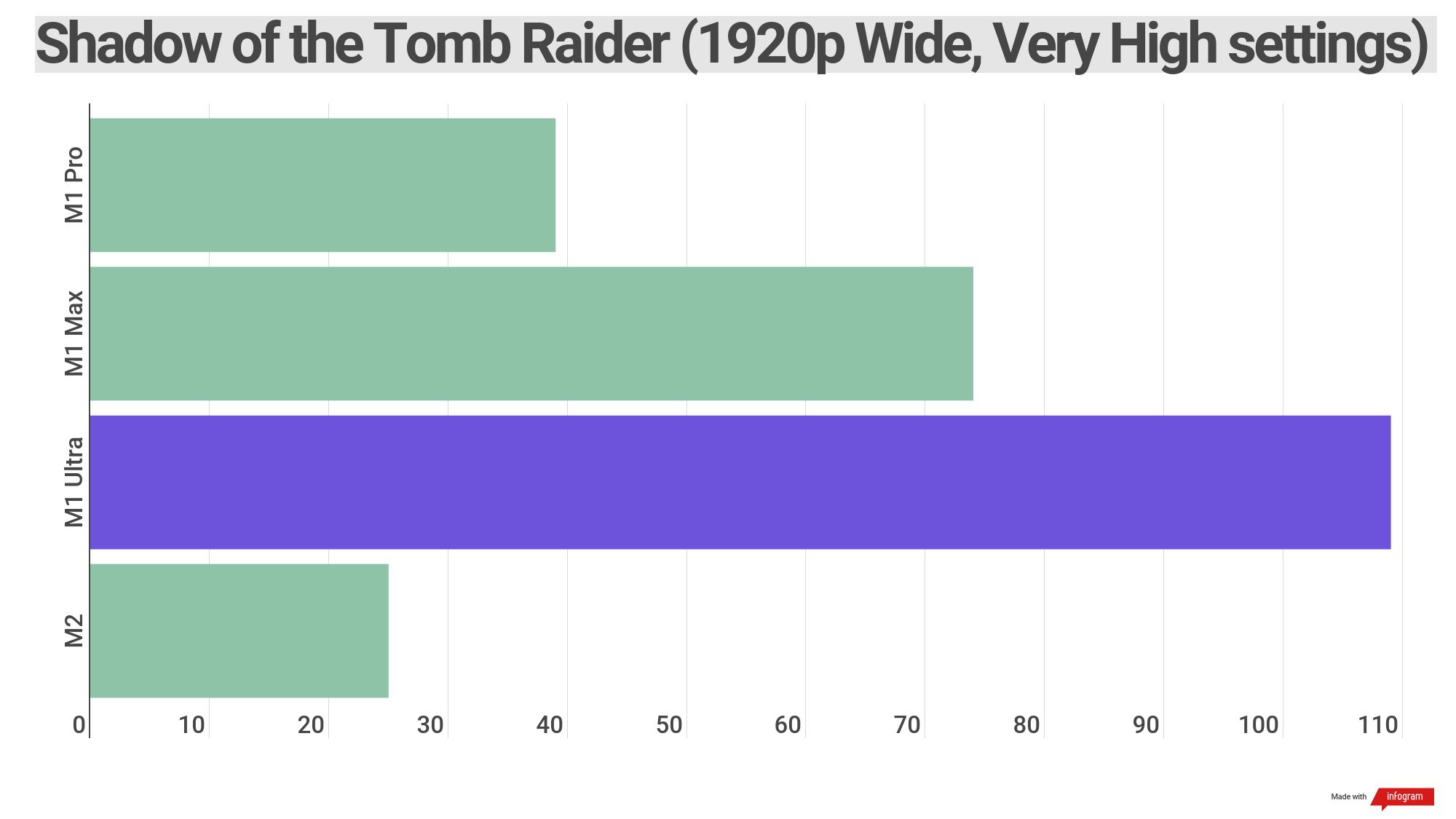
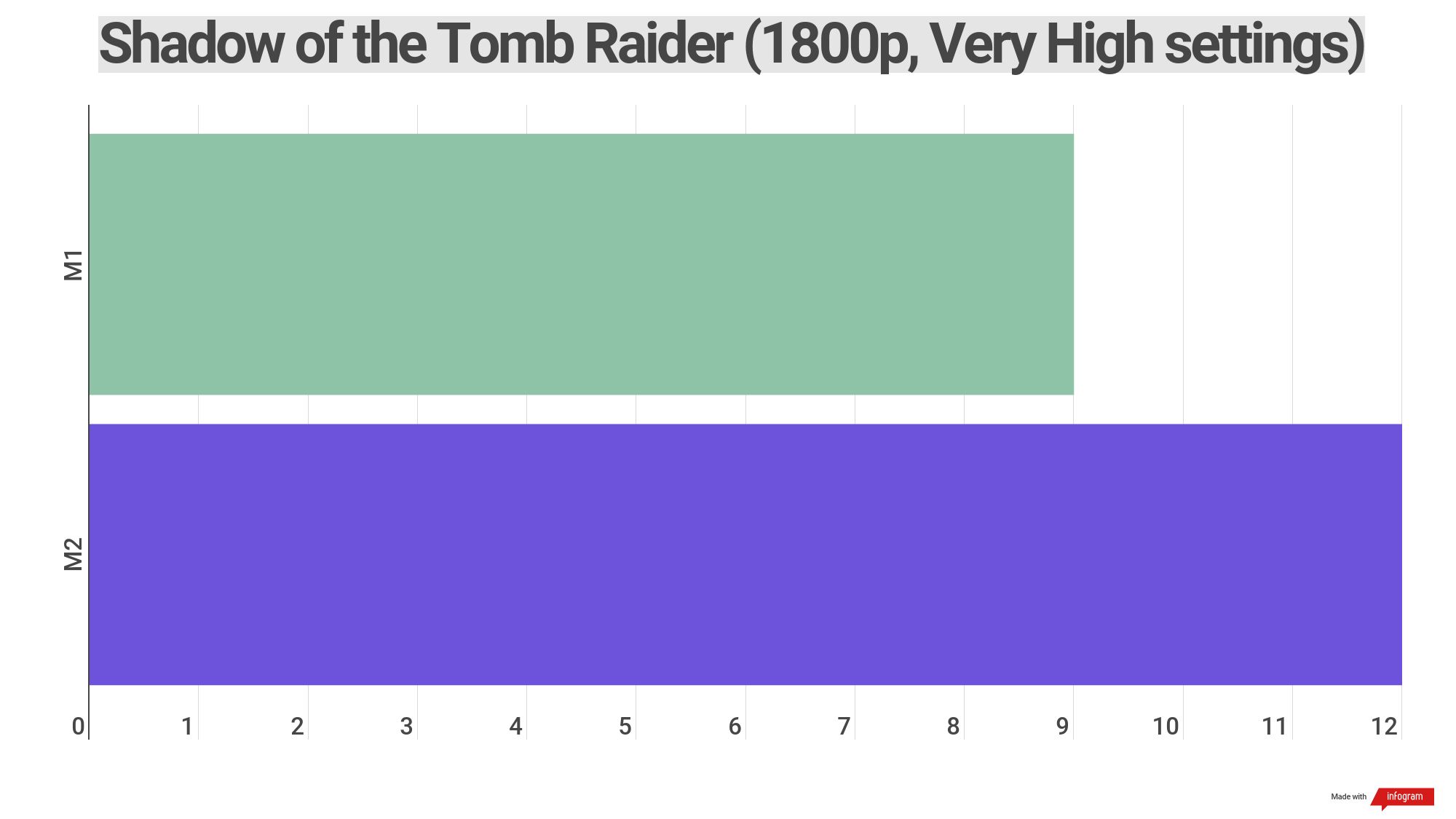

While Macs might not be known for gaming, that perception is changing. The winner when it comes to playing the best Mac games is definitely the M1 Ultra, thanks to its 64-core GPU, which can get up to 109 fps on Shadow of the Tomb Raider at very high at 1080p.
The easiest comparison is the M1 vs M2, which at max settings on 1800p, scores 9 fps for the M1 vs M2’s 12 fps, which is a 25% increase. Drop down the resolution to 1200p on very high settings, you can get a playable 25 fps on the M2.
Dropping that down a bit to 1920p wide (1080p on the M1 Ultra and 1200p on the MacBooks), the M2 comes up shortest of the four chips we have comparable scores for: the M1 Pro, M1 Max, M1 Ultra, and M2.
The M1 Ultra, naturally, comes out ahead on this one thanks to its gi-normous 64-core GPU, averaging about 109 fps in the Shadow of the Tomb Raider benchmark. The M1 Max averages about 74 fps, M1 Pro averages 39 fps, and the M2 averages 25 fps.
When it comes to Civilization VI: Gathering Storm, the M1 scores 38 fps at max settings at 1440x900p, while the M2 chip scores 51 fps at the exact resolution and settings.
Apple silicon ranked: Battery life
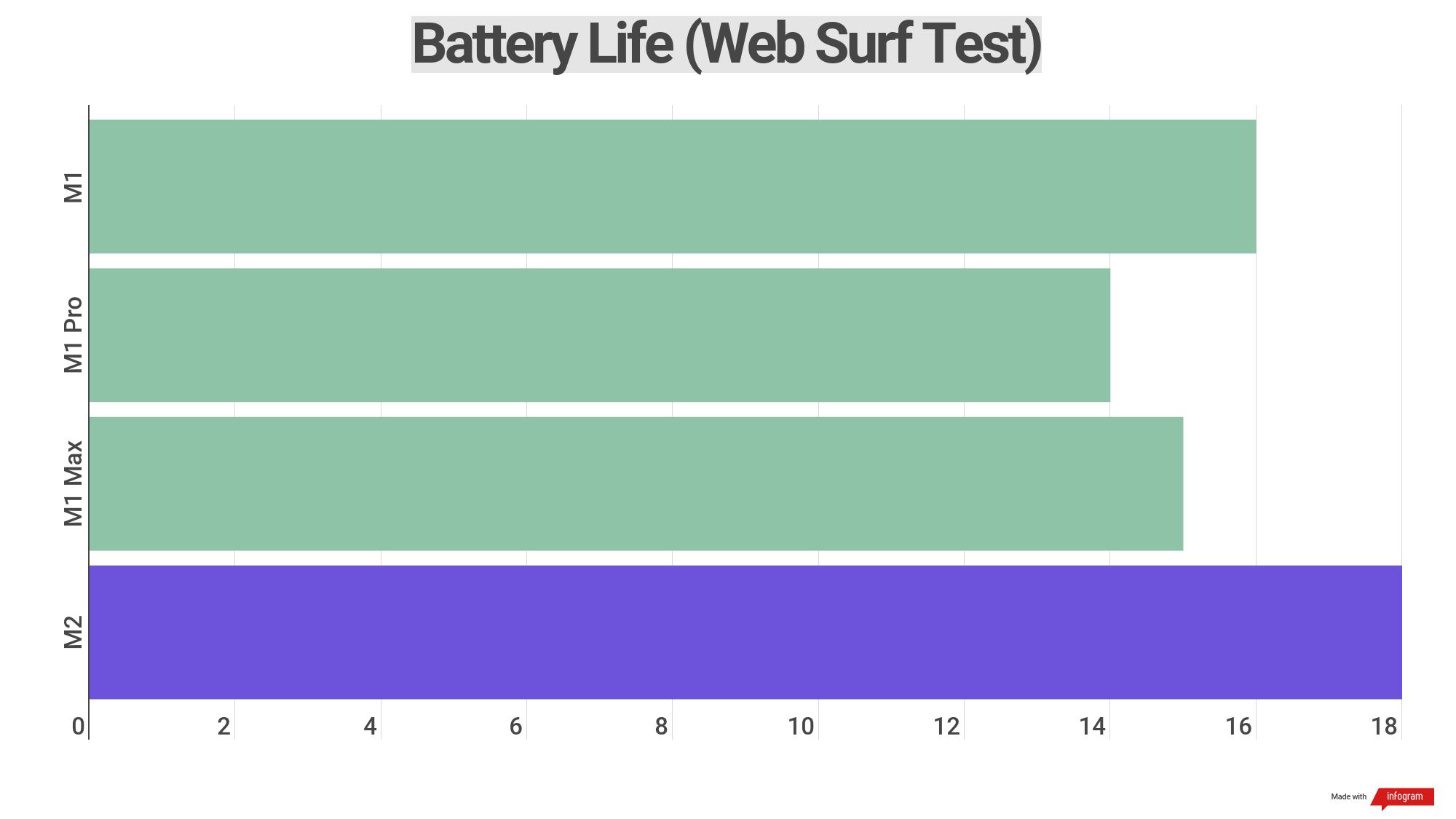
Ok, so what about battery life?
In this case, the Apple M2 comes out way ahead of the competition, scoring 18 hours and 20 minutes in our web surfing test.
Compared to the Apple M1 in the MacBook Pro 13-inch, which lasted 16 hours and 32 minutes, and the M1 Pro and M1 Max in the 14-inch MacBook Pro, which scored 14 hours and nine minutes and 15 hours and 32 minutes (respectively), the M2 is the clear champion here.

John (He/Him) is the Components Editor here at TechRadar and he is also a programmer, gamer, activist, and Brooklyn College alum currently living in Brooklyn, NY.
Named by the CTA as a CES 2020 Media Trailblazer for his science and technology reporting, John specializes in all areas of computer science, including industry news, hardware reviews, PC gaming, as well as general science writing and the social impact of the tech industry.
You can find him online on Bluesky @johnloeffler.bsky.social